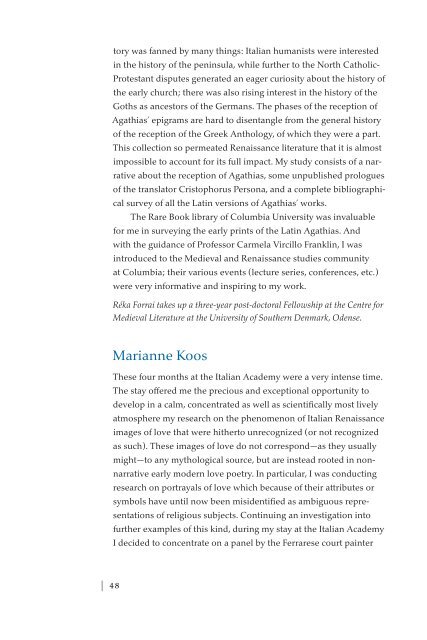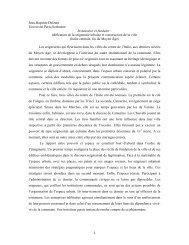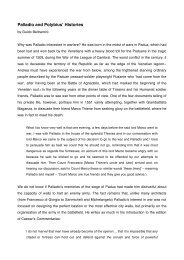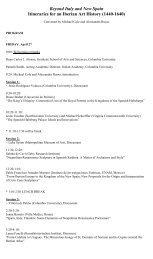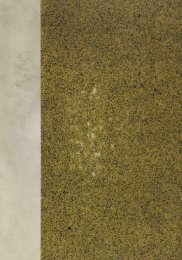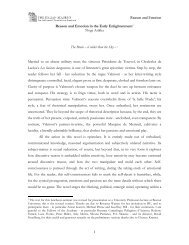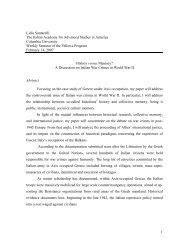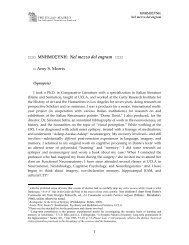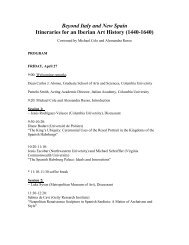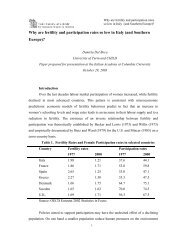2011-2012 - The Italian Academy - Columbia University
2011-2012 - The Italian Academy - Columbia University
2011-2012 - The Italian Academy - Columbia University
You also want an ePaper? Increase the reach of your titles
YUMPU automatically turns print PDFs into web optimized ePapers that Google loves.
tory was fanned by many things: <strong>Italian</strong> humanists were interested<br />
in the history of the peninsula, while further to the North Catholic-<br />
Protestant disputes generated an eager curiosity about the history of<br />
the early church; there was also rising interest in the history of the<br />
Goths as ancestors of the Germans. <strong>The</strong> phases of the reception of<br />
Agathias’ epigrams are hard to disentangle from the general history<br />
of the reception of the Greek Anthology, of which they were a part.<br />
This collection so permeated Renaissance literature that it is almost<br />
impossible to account for its full impact. My study consists of a narrative<br />
about the reception of Agathias, some unpublished prologues<br />
of the translator Cristophorus Persona, and a complete bibliographical<br />
survey of all the Latin versions of Agathias’ works.<br />
<strong>The</strong> Rare Book library of <strong>Columbia</strong> <strong>University</strong> was invaluable<br />
for me in surveying the early prints of the Latin Agathias. And<br />
with the guidance of Professor Carmela Vircillo Franklin, I was<br />
introduced to the Medieval and Renaissance studies community<br />
at <strong>Columbia</strong>; their various events (lecture series, conferences, etc.)<br />
were very informative and inspiring to my work.<br />
Réka Forrai takes up a three-year post-doctoral Fellowship at the Centre for<br />
Medieval Literature at the <strong>University</strong> of Southern Denmark, Odense.<br />
Marianne Koos<br />
<strong>The</strong>se four months at the <strong>Italian</strong> <strong>Academy</strong> were a very intense time.<br />
<strong>The</strong> stay offered me the precious and exceptional opportunity to<br />
develop in a calm, concentrated as well as scientifically most lively<br />
atmosphere my research on the phenomenon of <strong>Italian</strong> Renaissance<br />
images of love that were hitherto unrecognized (or not recognized<br />
as such). <strong>The</strong>se images of love do not correspond—as they usually<br />
might—to any mythological source, but are instead rooted in nonnarrative<br />
early modern love poetry. In particular, I was conducting<br />
research on portrayals of love which because of their attributes or<br />
symbols have until now been misidentified as ambiguous representations<br />
of religious subjects. Continuing an investigation into<br />
further examples of this kind, during my stay at the <strong>Italian</strong> <strong>Academy</strong><br />
I decided to concentrate on a panel by the Ferrarese court painter<br />
| 48


